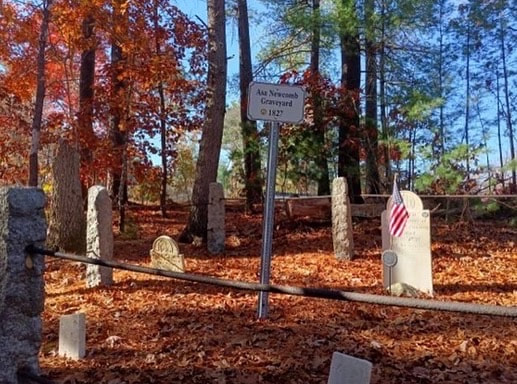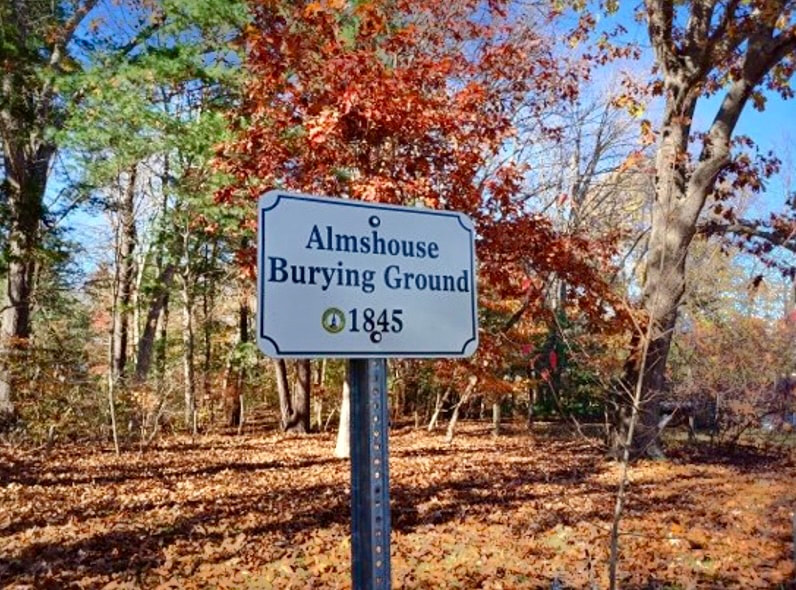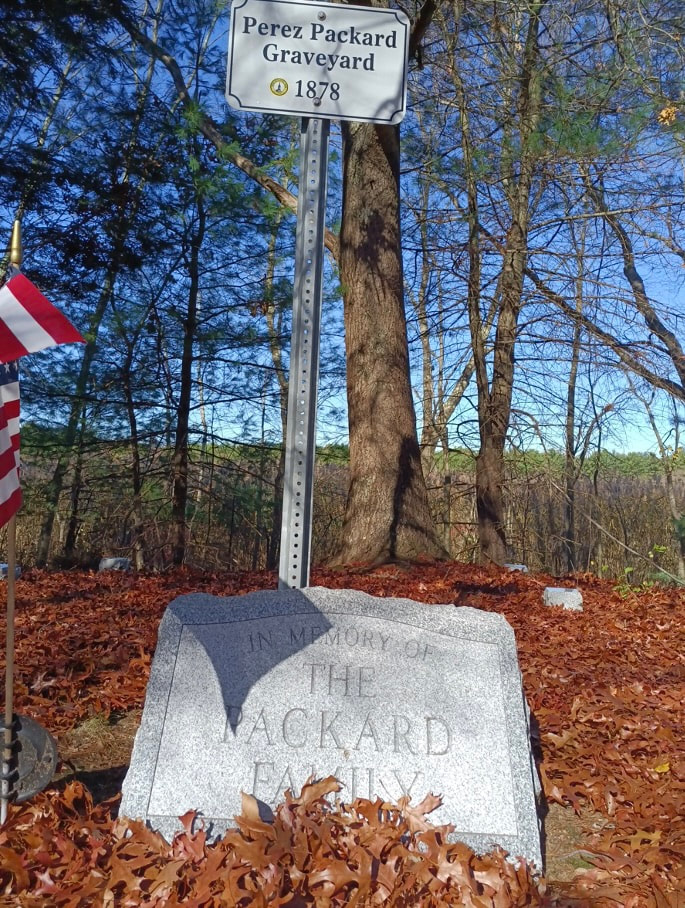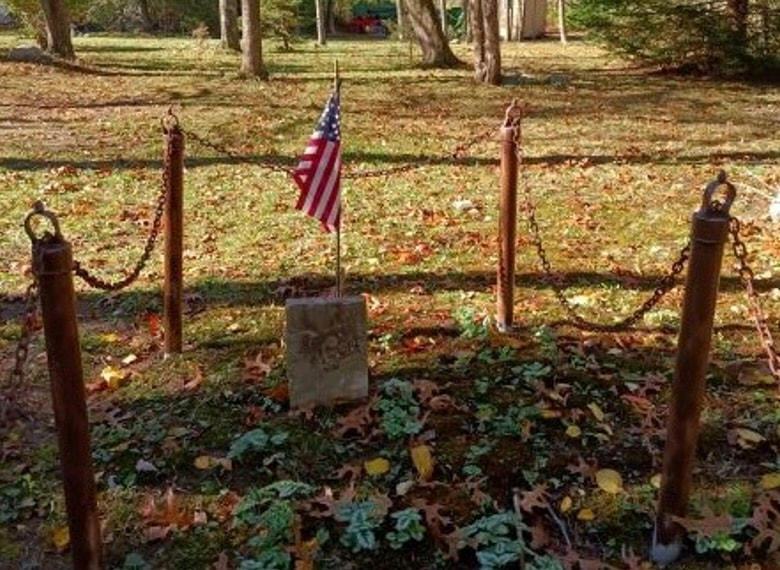|
Hello Everyone, Reminder of upcoming events: Easton Garden Club will be selling greens at the Easton Historical Society Saturday, December 3rd Easton Lion Clubs Annual Holiday Celebration is Sunday, December 4th Easton Festival of Trees, sponsored by the Easton Charitable Trust, November 26th to December 11th at the Easton Country Club Burying Grounds, Graveyards and Cemeteries. Easton has 36 cemeteries, both town-owned and private. The oldest is the Old Burying Ground, established in 1705 and located on Church Street. The last established cemetery is private; the Holy Cross Fathers Cemetery (1950) is located at 320 Washington Street. Before roads were ample and reliable in all seasons, when people lived on isolated farms without good transport, the dead were often buried on their own homesteads. Often the graves were unmarked, or only marked with piles of stones. Later when the property changed hands, new owners may not have known or cared about the burial sites. Some of Easton's burying grounds are very small and located in obscure places. I visited five small and unusual burial grounds in Easton. The Asa Newcomb Graveyard, located at 11 Red Mill Road in South Easton, includes only two graves. Asa's, who died at age 67 in 1827 and his wife Sally's. Sally died in 1836, age 65. Asa Newcomb lived in "the extreme southwest part of town" somewhere near the Norton line. In his History of Easton, Chaffin states the gravesite "is carefully enclosed and well cared for." The same is true today. Chaffin refers to Red Mill Road as Maple Street and it appears as such on early maps. Newcomb Burying Ground Another somewhat 'hidden' cemetery is the Almshouse Burying Ground (1845). It is located to the rear between 30 and 34 Rachel Circle. "A lot of land sixty by forty-five feet was laid out three hundred yards southwest" of the Almshouse for inmates who had no other option for burial- no willing friends or relatives. At the time Chaffin noted that there were nineteen or twenty unmarked graves. He suggested that it would be appropriate to provide headstones inscribed with birth and death dates for these unfortunates. Today there is a marker for the School Street Cemetery which notes that thirty-eight bodies are interred here, though "Their names are known only to God." The cemetery is no longer surrounded by "a good stone-wall" as it was in Chaffin's time. Perez Packard, who at one time lived in the Maliff house on Lincoln Street, is buried in a grassy area that was once near the edge of Flyaway Pond. A very young son, and a daughter of about twenty, are buried with him. You can reach the site by parking on Flyaway Pond Drive and walking a short distance into the woods. There is a path that leads to a stone inscribed 'In Memory of the Packard Family' (1878). As a family, the Packards came very early to Easton; the earliest date a male Packard is mentioned in Chaffin is1709. Nathaniel Packard was one of many petitioners writing 'To his Excellency Joseph Dudley, Esqr.' regarding the location of a meetinghouse. Nathaniel Packard also appeared on the muster roll of minutemen in Easton called to action after the first shots of the Revolution were fired in April of 1775. He was a veteran of the Revolutionary War. As you can see in the photos the Veterans of Easton are wonderful about keeping fresh flags at all gravesites. Captain Elisha Harvey, one of the earliest settlers in Easton, is buried on Elm Street near the intersection with King Ave on the property of the Old Colony YMCA, Easton Branch. It is possible that his grave (and others) were affected by modern construction in the area. Harvey came to Easton from Taunton before 1767 and during the Revolutionary War was present at many important battles, including Brooklyn Heights and Yorktown. He was promoted from Sergeant to Lieutenant, and toward the end of the war, Captain. He was known for being a brave officer. When the war ended, he was living in Taunton but was back in Easton in 1790 and died here in 1821. He received a pension of thirty dollars a month in his old age. Ichabod Manley's grave site is not far from the water tower near Roche Bros plaza in North Easton. Take Rockmeadow Drive off Washington Street, turn right onto Pebblebrook and park where the road bears to the left. Walk toward the left of the water tower and you will see, again to your left, a small chained off area. There is only one stone and I could not read anything on it. It took me two attempts to find the grave. On the map titled 'A Plan Of Ye Old Easton' based on an original map drawn in 1750, Ichabod Manley's homestead appears in Easton's northeastern corner, just south of the Stoughton line. His grave marker is in that approximate vicinity. Ichabod Manley's gravesite near the water tower off of Washington Street. Although not purposely hidden at the time, these gravesites are not easy to find today. I felt like a trespasser on occasion as I passed very close to modern homes. It is well that they are remembered and tended to. Although many burial sites are lost to time, it is good we treasure
what we have. Pine needles underfoot on both Pavement and path muffle all Sound. Morning is quiet but for The flutter of birds in the bittersweet Anne Wooster Drury www.eastonmahistoricalsociety.org · 508-238-7774
0 Comments
Your comment will be posted after it is approved.
Leave a Reply. |
Author
Anne Wooster Drury Archives
June 2024
Categories |
Easton Historical Society and Museum
PO Box 3
80 Mechanic Street
North Easton, MA 02356
Tel: 508-238-7774
[email protected]




